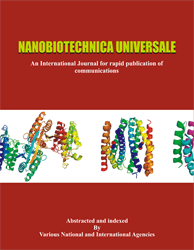Black cumin (Nigella sativa L.), from traditional medicine to modern therapeutics: A comprehensive review
Khandakar Shoaib1 , Sabnoor Yeasrin Jyoti2 , Subrat Kakati3 , Insan Ara Rahman2 , Piyush Kumar Mishra4 , Nitul Ali5 , Mehzabin Rehman6*
1Department of Botany, Gauhati University, Guwhati - 781014 (India) 2Department of Botany, Pandit Deendayal Upadhyaya Adarsha Mahavidyalaya Amjonga-783124 (India) 3Department of Botany, Nabajyoti College, Kalgachia - 781319 (India) 4Department of Botany, Bholanath College, Dhubri - 783324 (India) 5Department of Zoology, Rangia College, Kamrup - 781354 (India) 6*Department of Botany, University of Science & Technology Meghalaya, Ri-Bhoi, 793101 Meghalaya (India) *Corresponding author Email ID: mehzabinrehman@gmail.com (M. Rehman)
ABSTRACT
Nigella sativa or black cumin has a long history of use in traditional medicine in various cultures across the globe more particularly in India, Egypt and Turkey. Numerous studies have demonstrated its therapeutic efficacy against a wide range of chronic ailments such as neurological and mental disorders, diabetes, cardiovascular disease, cancer, inflammatory disorders, allergies and various infectious diseases. Its significant antioxidant qualities also make it a possible dietary supplement. While limited research has been conducted on N. sativa yet studies suggest its effects on COVID-19 and HIV/AIDS. The results suggested that this plant may be used as an alternate therapy for the same. However, further research is required to confirm its medicinal potential. These studies might improve the way N. sativa is used to treat a variety of illnesses and explore some of its undiscovered properties. This review offers a detailed analysis of the medicinal applications of black cumin (N. sativa) oilseeds along with potential anti-diabetic, anti-inflammatory, antioxidant, and anti-cancer pathways.
